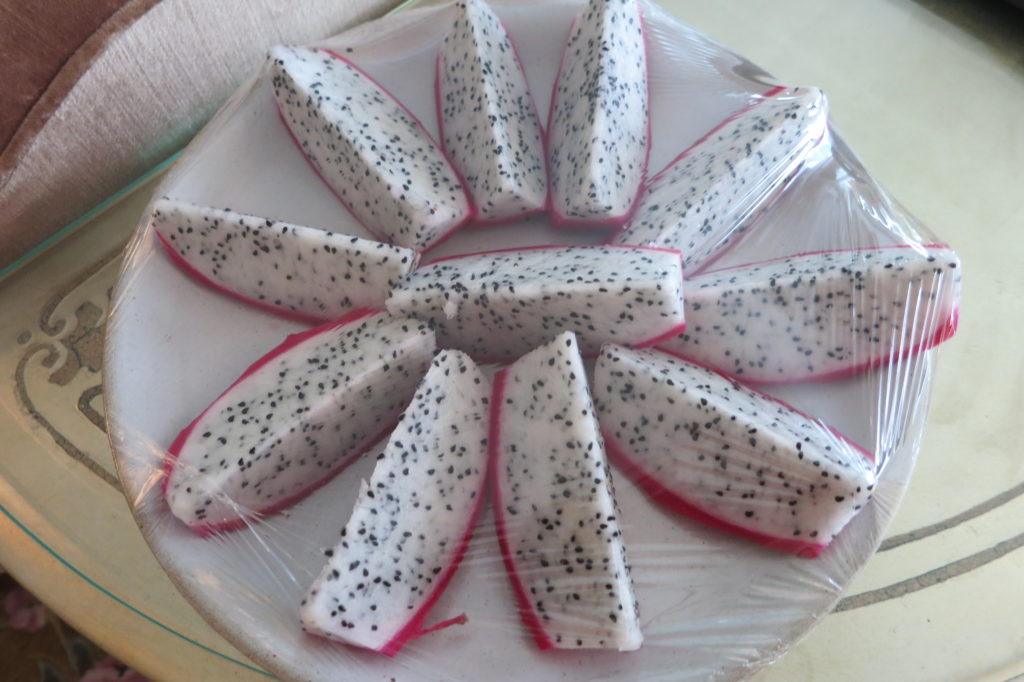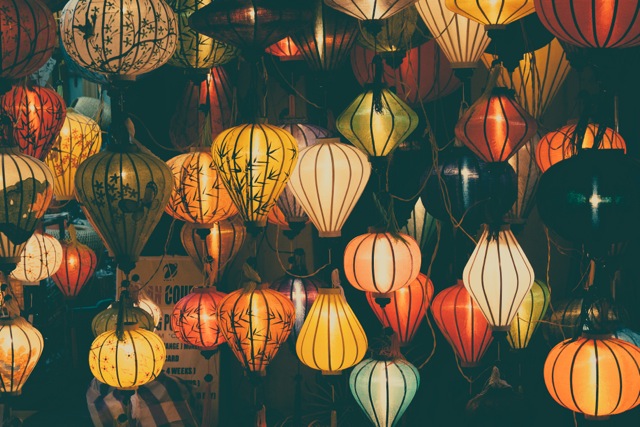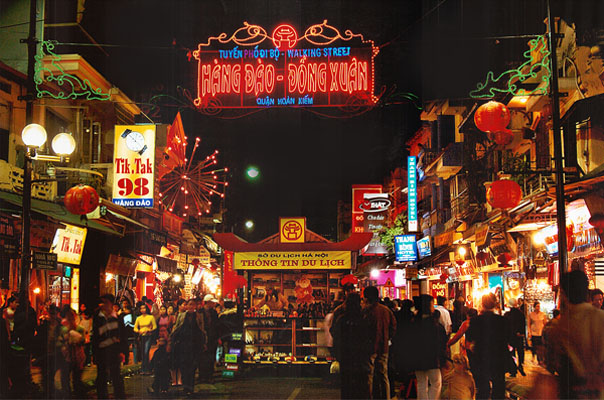Vietnam is a unique, beautiful, and fascinating country. Although Vietnam is a small country in Southeast Asia, it has played a major role in the history of the region. Vietnam is a fascinating meld of Asian and European influences. Learning about Vietnam, both by visiting and reading, tells the story of a people, their history, and their unique culture.
My Vietnam Backstory
When people know you’re “well traveled” they make assumptions. Rather than ask you, “Have you been to a particular destination” they’ll ask, “How did you like a place?” Lately, that’s been happening with visiting Vietnam. People assume I’ve been there because I have family friends in Vietnam. It’s a destination I never tire of visiting.
Visiting Vietnam was in the planning stages when the pandemic began. Obviously, I put the visit on hold. However, my trip planning was done and my interest in Vietnamese history, culture, and food, never stops!
As I learn, I share, so thought it would be fun to write about some of the fascinating things I learned about Vietnam and lead you on this armchair tour of this extraordinary destination. You might just want to add visiting Vietnam to your post-pandemic bucket list of places to visit.
Vietnam’s Unique Geography
Vietnam has a fascinating geography and location. Vietnam is about the size of Norway, and it is surrounded by China to the north, the South China Sea to the east and south, the Gulf of Thailand to the southwest, and Cambodia and Laos to the west. About 99,000,000 people live in Vietnam. It is considered a socialist republic. The capital is Hanoi.
The country has a wide range of climates and regions, including evergreen forests (rich in hardwoods and many types of plants), as well as rainforests and mountainous subtropical regions.
https://www.youtube.com/watch?v=3M0TmN2TsK4
The Vietnamese breed water buffalo for transportation and farming. Many wild animals also live in Vietnam, such as elephants, leopards, tigers, tapirs, several types of bears, deer, porcupines, mongoose, and more.
Vietnam is still considered a “developing” nation that relies on its rich agricultural resources and animals for food and transportation. It has developed many industries over the past decades, including manufacturing and imports.
A Brief History of Vietnam
Going back in history, Vietnam was an early agricultural society that relied on wet rice farming. Even dating back centuries, the people were innovative and hard working as they developed stone and metal tools. They created a diverse economy and advanced civilization. The Vietnamese had to be creative and hearty as they struggled with natural disasters (like flooding of the many rivers that run through the country) and foreign invasion.
Vietnam’s relationship with China is a major theme in the country’s development. China ruled Vietnam for centuries. Chinese influence was woven into the fabric of Vietnam. Vietnam paid tribute to the Chinese emperors, sharing natural resources and riches like ivory, tropical foods, and animal skins. In return, China shared its high literature, ideas on philosophy, and legal system. The Vietnamese aristocracy modeled itself on the Chinese emperors and monastic structure of government.
After the Bach Dang victory over China in 938 A.D., Vietnam developed into an independent feudal state. Several centralized administrative states were established. Through 1527, Vietnam was one of the most prosperous nations in Asia.
Four Vietnamese dynasties constitute the “golden age” of the country’s history: Ly (1009-1226), Tran (1226-1400), Ho (1400-1407), and Le So (1428-1527). The country was called Dai Viet during this period.
The Vietnamese created their own writing system at this time (a combination of Vietnamese and Chinese). Notable achievements were the development of irrigation and agriculture. Traditional villages were organized throughout the country. Buddhism and Confucianism co-existed as the main religions of Vietnam.
In the 16th century, the feudal system weakened. There were large gaps between the rich and the poor. Civil wars and conflicts between regions kept the Vietnamese people divided. Towns and ports developed between 1600 and 1700 (which increased domestic and international trade), but the country became especially vulnerable to European invasion.
By the early 1800s, the French entered and dominated Vietnam. We still see French influence in the country when we observe the western-style architecture, hear French words, and experience food with a decidedly French flavor.
The People and Culture of Vietnam
As you can see, Vietnam has a history of standing up to larger dominating forces (like China and France), and blending these influences with the country’s own unique character.
Vietnam has more than 50 distinct ethnic groups, each with its own culture, language, and lifestyle. The largest groups are the Kinh (Viet) 85.7%; Tay 1.9% Tai Ethnic 1.8%, Khmer Krom 1.5%; Hmong 1.2%, and the list goes on.
Clothing is an interesting feature of Vietnamese lifestyle. For instance, the highland ethnic minority groups are known to wear colorful attire.
The Vietnamese value family and clan affiliation more than individualism. Clans live together, headed by a patriarch. Many generations of families often live together in the same house.
Several religions co-exist throughout Vietnam. Buddhism is prevalent, and many people follow Confucianism, Taoism, and Animism. The Catholic church also has a presence in Vietnam.
Vietnamese music and dance are unique within the culture. Musical instruments are string, woodwind, and percussion, and they are made of natural materials including animal skins, bamboo, and ivory. Traditional dances (developed in the imperial courts of days gone by) can be elaborate performances using costumes, fans, and other props.
As for literature and poetry, Vietnam has a rich tradition of both. Folk literature tells the story of fairies, folk legends, and humorous stories. The more formal written literature focuses on poetry, drama, and novels.
Water puppetry is a particularly unique form of Vietnamese art, where puppeteers, standing behind or below water sets, manipulate ornate puppets on long sticks. This is one activity you don’t want to miss when visiting Vietnam.
And of course Vietnamese food is a culinary wonder. It makes visiting Vietnam a delicious journey! The Vietnamese eat a great deal of rice, but they also create “Pho” or noodle soup, fresh vegetables, and enjoy interesting condiments and additions to meals including bean sprouts, lime, basil, mint, and fish sauce.

I love dragonfruit!
Make Sure YOU Always Get the Lowest Prices on Hotel Rooms: Here’s How!
But no possible understanding about Vietnam is complete if you don’t look into one of the most contentious events of the country’s history: The Vietnam War.
The Vietnam War (Two Versions)
Many of you, myself included, have direct experience with the Vietnam War—ranging from military service, resistance, or memories of television news. It’s extremely complicate to understand the causes and results of the war. Take a look at two versions of history—one presented by the Vietnamese government, and the second by history.com.
On the Consulate of Vietnam’s website, they point out that looking back through history, we can see a particular pattern as tiny Vietnam finds a way to stand up to colonial powers. In modern history, the most significant political movement was the founding of the Communist Party in 1930. President Ho Chi Minh seized power and led reform efforts.
It took more than 30 years for the Vietnamese to achieve liberation and reunification. It wasn’t until 1945 that the Democratic Republic of Vietnam became official. During this time, the Vietnamese were still struggling to gain independence from France. In 1954, the Dien Bien Phu victory and the Geneva Accord led to the end of French occupation.
The Geneva Accord commanded that the country be divided into North and South Vietnam along the 17th Parallel. South Vietnam was backed by a pro-French and pro-American government based in Saigon. North Vietnam had communist support from China and the Soviet Union. The regime in Saigon did not want the country to reunite. This led to the establishment of the National Liberation Front for South Vietnam in 1964.
According to the Vietnam Consulate:
“Between 1954 and 1975, Viet Nam had to stand up for national liberation and unification. To support the South Viet Nam regime, the US sent military aid and over half a million soldiers to Viet Nam, and started bombing North Viet Nam in 1964. To fulfill President Ho Chi Minh’s apiration that “nothing is more precious than independence and freedom”, the Vietnamese people experienced untold hardship and sacrifice. In 1973, the Paris Accord was signed for restoration of peace in Viet Nam and withdrawal of the US troops.
The war came to an end in spring 1975 as the patriotic armed forces launched an offensive against the Saigon regime, liberated southern Viet Nam and reunified the country. Since then, the unified Viet Nam has ushered into a new era of peace, unification and national construction. Democratic Republic of Viet Nam was renamed Socialist Republic of Viet Nam on April 25 1976. In 1977, Viet Nam became a member of the United Nations. In the first ten years of post-war period, many socio-economic targets could not be achieved due to both internal and external reasons. Viet Nam’s economy fell into crisis and stagnation. People’s lives were difficult.”

History.com provides a different perspective on the war, starting with how Vietnam became a communist country.
An oversimplified explanation goes back to World War II (and even before). When Japan invaded Vietnam, leader Ho Chi Minh, inspired by Soviet and Chinese communism, created the League for the Independence of Vietnam (Viet Minh).
As soon as the Japanese were defeated in 1945, Emperor Bao Dai (who was educated in France) was left in control of Vietnam. Supported by the French, Bao made Saigon the capital of Vietnam in 1949.
Ho Chi Minh’s forces declared the Democratic Republic of Vietnam and made Hanoi its capital.
Armed conflict occurred between north and south until the Battle of Dien Bien Phu in 1954, when the northern forces had a victory. This led to defeat of the French, and the end of colonial rule in Indochina.
Both sides wanted a unified Vietnam. Bao wanted a country with western affiliation, and Ho wanted a communist model. Bao was pushed aside by anti communist leader Ngo Dinh Diem. By 1955, President Dwight Eisenhower pledged American support to South Vietnam. The American military and the CIA supported Diem’s regime and cracked down on the Viet Cong—Vietnamese Communists. More than 100,000 were arrested, and many were tortured and executed.
The Viet Cong fought back. They targeted government officials as well as innocent Vietnamese. The conflict escalated to firefights by 1959. Both communist and non-communist forces resisted the repressive regime of Diem.
In 1961 President John F. Kennedy sent a team to report on conditions in Vietnam. They told the president to build up American military presence and provide economic and technical aid to the South Vietnamese. Kennedy increased the number of troops to 9,000 by 1962.
Just before Kennedy’s assassination in 1963, Diem was killed in a coup. The volatility in the area persuaded President Lyndon B. Johnson to increase the U.S. military forces and economic support in the region. Conditions worsened, and Congress gave Johnson sweeping war-making powers.
U.S. bombing spread to other surrounding countries, including Laos and Cambodia. The bombing was intended to stop the flow of supplies into Vietnam and prevent the rise of the Lao communist forces.
In 1965, Johnson sent more than 100,000 American troops into Vietnam to fight for the South Vietnamese. Other countries joining U.S. intervention included South Korea, Australia, New Zealand, and Thailand.
Anti-war sentiment grew stronger in the United States. The enemy body count increased, but so did the South Vietnamese defenders. The North Vietnamese, with steady support by China and Soviet Union, kept fighting.
By 1967, half a million American troops were serving in Vietnam. The war kept going, while soldiers had increasing distrust in the American government. American soldiers suffered immense physical and psychological damage. There was rampant drug abuse, and PTSD, and attacks and mutinies within American troops.
The anti-war movement gained steam. More than 500,000 U.S. military personnel deserted by 1973. Many Americans strongly opposed the war. By 1968, Johnson halted the bombing and shifted his energy to seeking peace (rather than re-election).
The next President, Richard Nixon, tried to deflate the anti-war movement, saying a “silent majority” of Americans supported the war. U.S. troops began to return home. The South Vietnamese were trained to increase aerial and artillery bombing. The North Vietnamese insisted on total U.S. withdrawal.
As anti-war demonstrations continued, by 1972 Hanoi was willing to compromise. Henry Kissinger helped broker a peace agreement with the North Vietnamese, which was rejected by Saigon. The next year, the two sides signed a peace treaty. The fighting didn’t end, though. In 1975, the North Vietnamese forces captured Saigon and renamed it Ho Chi Minh City.
The Aftermath of the Vietnam War
The 20-plus years of war took its toll on Vietnam. More than 2 million people were killed, and 3 million were wounded. More than 12 million were refugees. The war destroyed the country’s economy and infrastructure. Reconstruction proceeded slowly.
In 1976 the country was unified as the Socialist Republic of Vietnam. As their economy began to improve, trade and diplomatic relations improved between the U.S. and Vietnam.
Visiting Vietnam Today: Ho Chi Minh City
You probably know Ho Chi Minh City by its former name: Saigon. It is the largest city in Vietnam, with a population of more than 9 million. The city is located along the Saigon River to the north of the Mekong River delta, and it is 50 miles from the South China Sea.
The land occupied by Ho Chi Minh City was once part of the kingdom of Cambodia. French traders and missionaries settled in the area in the 1800s. Saigon became a major port city in the late 1800s under French rule (which continued through 1945).
The city reflects a European eye for design, with broad, tree-lined streets, European style architecture, and an extensive railway network. Over the years, the city has played a major role as the export center for the rice grown in the Mekong River delta.
Ho Chi Minh City has been the site of many military conflicts, particularly during the Vietnam War as the capital of South Vietnam. In 1975 the North Vietnamese took over Saigon, and it was re-named.
Many businesses that catered to foreign influence (like the American military) thrived during the Vietnam War, but now Ho Chi Minh City is trying to grow in new ways. There are museums, a new national theater, and an expanded University of Ho Chi Minh City, to name a few changes over the years.
Visiting Vietnam: Hanoi
Hanoi is the capital of Vietnam, with a population of 5 million. Hanoi is located on the west bank of the Red River, which is 85 miles from the South China Sea.
Throughout Vietnam’s history, Hanoi was selected as a political center by various conquerors. In 1902 the French named the area “Tonkin” and made it the capital of French Indochina.
During World War II the Japanese occupied Hanoi (from 1940-1945). After their defeat, Ho Chi Minh claimed the city as the capital of the Democratic Republic of Vietnam.
During the Vietnam War, United States bombing caused great damage to Hanoi. In 1976, the city was named the capital of the Socialist Republic of Vietnam.
Over the decades, Hanoi has become an industrial and agricultural center of Vietnam. The farms surrounding Hanoi grow rice, cereal, fruits, and vegetables. Manufacturing in the area includes textiles, chemicals, machine tools, and electric motors and generators.

Roads and rail lines connect the city with other main Vietnamese cities. The Red River remains a commercial route. There are two airports in the city.
A few famous monuments and temples still remain in Hanoi (most were destroyed over the years of foreign occupation and civil war). Tourists can still visit sites like The Temple of Literature (going back to 1070 A.D.), the Co Loa citadel (3rd century BCE) and Temple of the Trung Sisters (1049). The city has many fascinating museums that tell its history, including the National Museum.
Learn more: Here is a wonderful PBS video called Saigon stories!
Final Thoughts
Many of us think of the Vietnam War as a time of turmoil and conflict, and we might not realize how much the country has changed over the years. Visiting Vietnam is well worth your time!
With the numbers of Vietnamese immigrants that arrived in the U.S. during and after the war, the Vietnamese have a strong cultural presence here as well.
Hopefully this article has demystified your perceptions about Vietnam, and will persuade you to one day visit this unique, beautiful, and fascinating country. I can’t wait to go back!
Related Articles:
- When I book award tickets for my international travels, I always rely on Juicy Miles! They get me the best deals to maximize my miles and points.
- I Always Get the Lowest Prices on Hotel Rooms: Here’s How!
- My Favorite Travel Resources and Products
- 9 Awesome Travel Accessories To Pack for Your Next Trip
The responses below are not provided or commissioned by the bank advertiser. Responses have not been reviewed, approved or otherwise endorsed by the bank advertiser. It is not the bank advertiser's responsibility to ensure all posts and/or questions are answered.
6 comments
There 11 years ago but in DaNang area-Hoi-An
Thanks for reading, Dee. I enjoyed my stay in DaNang and Hoi An is fascinating. Hope you’ll return to Vietnam!
[…] This was published by BoardingArea, to read the complete post please visit https://pointmetotheplane.boardingarea.com/vietnam-travel-tips-culture-history-cuisine/. […]
[…] Read more […]
I’ve only been to HCM City a couple of times but I’m itching to see more of the country. I remember watching Anthony Bourdain there and he brought up the fact that what we call the Vietman War, they call the American War. Still, in my brief visits I encountered no rancor, which was a pleasant surprise.
Might be time to travel to Vietnam again, Christian! Thanks for reading and taking the time to comment.